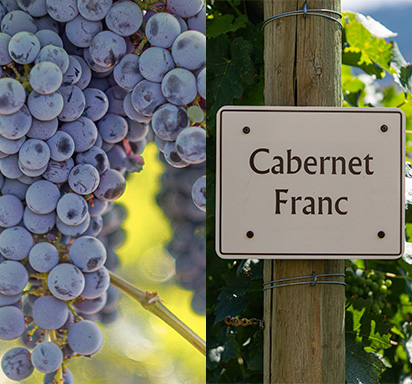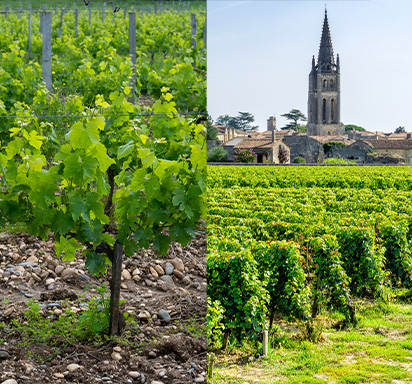Chardonnay vs Sauvignon Blanc: A Comprehensive Guide

Discover the key differences between Chardonnay & Sauvignon Blanc in this comprehensive guide. Explore their unique flavor profiles, origins, winemaking techniques, and perfect food pairings to elevate your white wine experience.
When it comes to white wine, two names often stand out: Chardonnay and Sauvignon Blanc. These iconic varietals are beloved worldwide, each offering a unique profile that caters to diverse palates. Whether you're a wine connoisseur or a casual sipper, understanding the differences between Chardonnay and Sauvignon Blanc can enhance your appreciation and enjoyment. Let's dive into the distinctive characteristics, origins, and food pairings of these popular wines.
The Origins and Characteristics of Chardonnay
Chardonnay is one of the most widely planted grape varieties in the world. Originating from the Burgundy region of France, it has found homes in many of the world's leading wine regions due to its adaptability, including California and new world regions such as Australia, and New Zealand.
Flavor Profile
Chardonnay is known for its versatility. The flavors can range from crisp and citrusy to rich and buttery, often influenced by the climate where the grapes are grown and the winemaking techniques employed. Common tasting notes include green apple, pear, and lemon in cooler climates like Chablis, while warmer climates, such as California or Chile yield tropical fruit flavors like pineapple and mango. Oak aging can introduce vanilla, butter, and toast notes, adding complexity and depth.
Winemaking Techniques
One of the unique aspects of Chardonnay is its ability to undergo malolactic fermentation, which converts sharp malic acid into softer lactic acid, giving the wine a creamy texture. Oak aging is also common, contributing to the wine's body and flavor complexity. Oak-aged Chardonnays exude notes of brioche, butter and nuts.
The Origins and Characteristics of Sauvignon Blanc
The roots of Sauvignon Blanc go down deep into Bordeaux and Loire Valley soils, two illustrious wine regions in France, but has also gained prominence in New Zealand, particularly in Marlborough, as well as in California, Chile, and South Africa. In Bordeaux, the Sauvignon Blanc varietal is often blended with Semillon and Muscadelle.
Flavor Profile
Sauvignon Blanc is celebrated for its bright acidity and vibrant flavors. It typically offers notes of green apple, lime, and grapefruit, with herbal undertones such as bell pepper, grass, and nettle. In cooler climates, the wine is more likely to exhibit these green and herbaceous characteristics, while warmer climates can bring out riper, tropical fruit flavors.
Winemaking Techniques
Sauvignon Blanc is usually fermented in stainless steel tanks to preserve its fresh and zesty character. It is less commonly aged in oak compared to Chardonnay, though some producers experiment with barrel aging to add texture and complexity.
Key Differences Between Chardonnay and Sauvignon Blanc
Acidity and Body
Chardonnay: Generally has a lower acidity and a fuller body, especially when aged in oak.
Sauvignon Blanc: Known for its high acidity and lighter body, making it a refreshing choice.
Flavor Profiles
Chardonnay: Flavor varies widely based on winemaking techniques, ranging from citrus and green apple to buttery and oaky when aged in oak barrels.
Sauvignon Blanc: Consistently features bright, zesty flavors with herbal and green notes.
Aging Potential
Chardonnay: Particularly those aged in oak, can develop and improve over several years.
Sauvignon Blanc: Typically best enjoyed young to capture its fresh, vibrant character.
Food Pairings with Chardonnay and Sauvignon Blanc
Chardonnay Pairings
Rich dishes like lobster with butter sauce, creamy pasta, and roasted chicken. Mild cheeses such as brie and camembert. Grilled vegetables and dishes with buttery or creamy sauces.
Sauvignon Blanc Pairings
Lighter fare such as goat cheese, salads, and seafood like oysters and grilled fish. Spicy dishes, including Thai and Indian cuisine, which pair well with its high acidity. Fresh herbs and green vegetables, complementing its herbaceous notes.
Staples in the White Wine World
Both Chardonnay and Sauvignon Blanc offer unique and delightful drinking experiences, making them staples in the world of white wine. Whether you prefer the rich, full-bodied notes of a well-aged Chardonnay or the crisp, zesty freshness of a Sauvignon Blanc, there's a white wine to suit every palate and occasion. By understanding their origins, flavor profiles, and ideal food pairings, you can elevate your wine selection and appreciation.
You may like
Explore the key differences between Malbec and Cabernet Sauvignon — from origins and taste profiles to food pairings and top producers — to discover which red wine suits your style best.
6/16/2025Explore the key differences between Cabernet Sauvignon and Cabernet Franc—from origins and flavor profiles to winemaking roles—so you can better choose and enjoy these iconic red grapes.
6/11/2025The exceptional concentration of top-tier wineries and renowned appellations has long made Bordeaux a place of longing for fine wine enthusiasts and discerning hedonists around the world.
4/18/2025Malbec and Merlot are two beloved red wines, each with unique flavors, tannins,& origins. Malbec offers bold, dark fruit flavors with spice, while Merlot is smoother & more approachable. Learn their differences and food pairings.
4/1/2025Chardonnay and Pinot Grigio are two beloved white wines with distinct flavors. Explore their origins, flavor profiles, body, food pairings, and more to find out which wine suits your taste and occasion best.
3/27/2025Pinot Noir and Merlot are two beloved red wines with distinct flavors, aging potential, and food pairings. Discover their key differences to help you choose the perfect bottle for any occasion.
3/5/2025




























